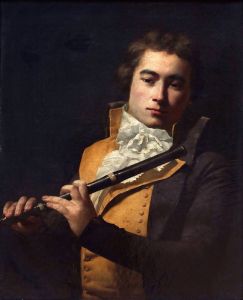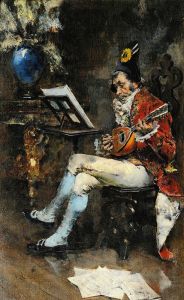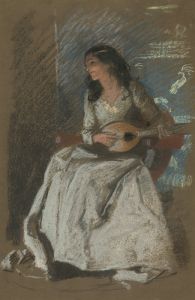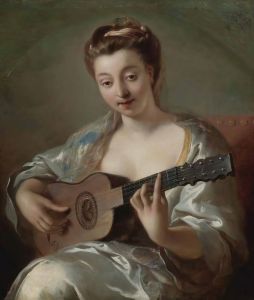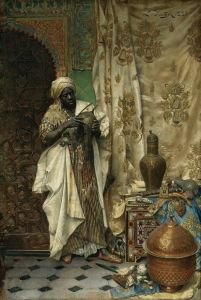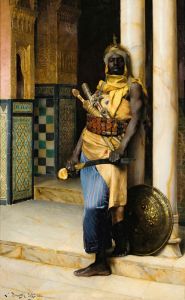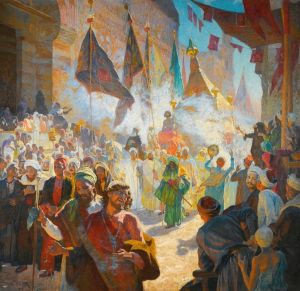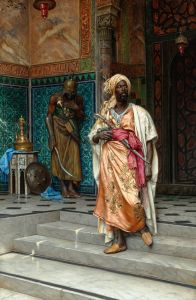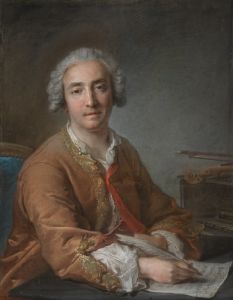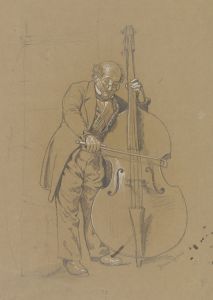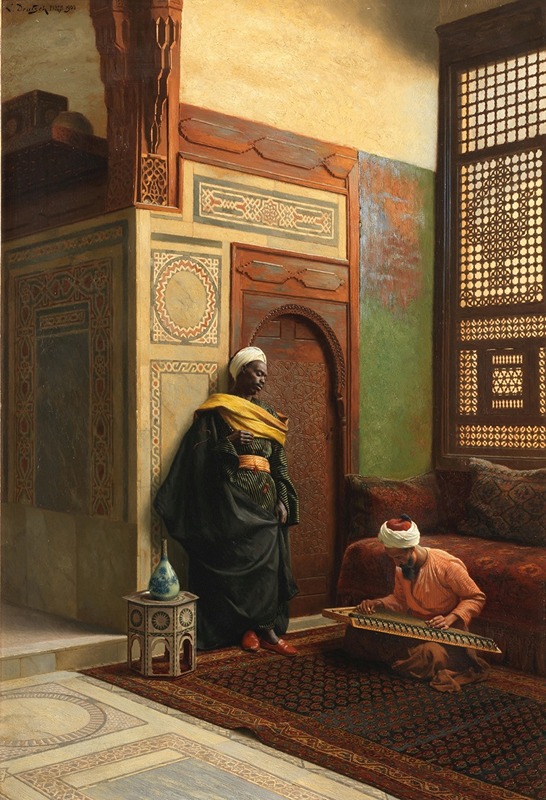
The Qanun Player
A hand-painted replica of Ludwig Deutsch’s masterpiece The Qanun Player, meticulously crafted by professional artists to capture the true essence of the original. Each piece is created with museum-quality canvas and rare mineral pigments, carefully painted by experienced artists with delicate brushstrokes and rich, layered colors to perfectly recreate the texture of the original artwork. Unlike machine-printed reproductions, this hand-painted version brings the painting to life, infused with the artist’s emotions and skill in every stroke. Whether for personal collection or home decoration, it instantly elevates the artistic atmosphere of any space.
Ludwig Deutsch was an Austrian painter known for his Orientalist works, capturing scenes and subjects from the Middle East and North Africa with meticulous detail and vibrant color. One of his notable paintings is "The Qanun Player," which exemplifies his skill in portraying the rich cultural and architectural elements of the regions he depicted.
"The Qanun Player" is a fine example of Deutsch's fascination with the daily life and musical traditions of the Middle East. The painting features a musician playing the qanun, a traditional string instrument that is integral to Middle Eastern music. The qanun, known for its trapezoidal shape and distinctive sound, is played by plucking the strings with plectra attached to the fingers. This instrument has a long history in the region and is often associated with classical Arabic music.
In this painting, Deutsch captures the musician in a moment of concentration and artistry. The setting is likely an interior space, characterized by intricate architectural details and rich textiles, which are hallmarks of Deutsch's work. The background may include elements such as ornate tiles, carved woodwork, or luxurious fabrics, all of which contribute to the authenticity and immersive quality of the scene. These details reflect Deutsch's dedication to accurately representing the environments he painted, often based on his travels and studies of the region.
Deutsch's work is celebrated for its attention to detail and the way it brings to life the textures and colors of the Middle East. His paintings often feature a play of light and shadow that adds depth and realism to the scene. In "The Qanun Player," the light might highlight the musician's focused expression and the polished surface of the qanun, emphasizing the craftsmanship of both the instrument and the painting itself.
Ludwig Deutsch was part of a broader movement of Orientalist artists in the 19th and early 20th centuries, who were inspired by the cultures and landscapes of the East. While Orientalism as a genre has been critiqued for its exoticizing tendencies and colonial perspectives, Deutsch's work is often noted for its respectful and detailed portrayal of his subjects. His paintings are appreciated for their artistic merit and the window they provide into the cultural practices of the time.
"The Qanun Player" is a testament to Deutsch's ability to capture the essence of a moment and the cultural richness of his subjects. His works remain valuable both as pieces of art and as historical documents that reflect the Western fascination with the East during his lifetime. Today, Deutsch's paintings, including "The Qanun Player," are held in various private collections and museums, continuing to be admired for their beauty and historical significance.





